Icons of History, Icons of Steampunk
A look at sixteen historical figures who are steampunk inspirations, or maybe should be

Now it can be revealed: The identities of the historical figures in our new social media banner. Except for H.G. Wells, all lived most of their lives in the 19th century, and each was prominent in some way, as an author, artist, social reformer, or head of state. Some should be immediately familiar, but others likely stumped even the most dedicated history buffs.
Most have some direct connection to steampunk, either as inspirations for the genre or as characters in steampunk works. Others easily could be steampunk characters based on their life stories.
This is far from being an all-encompassing gallery of important 19th century personalities. With a couple exceptions, these are all Americans or Europeans, so it’s best to describe them as major figures in 19th century American and European history. One practical challenge was finding suitable public domain portraits. That alone forced us to exclude some people who otherwise might have been worthy of inclusion. We also had to deal with space limitations.
Now that we’ve revealed their identities, here are short bios and rundowns of how they’ve been portrayed in fiction and drama. Click on the names to see full bios in Wikipedia.
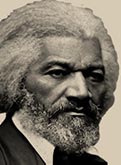
Frederick Douglass (1818-1895) – After escaping slavery in Maryland at age 20, he became famous as a social reformer, abolitionist, orator, writer, and statesman. In addition to his efforts to end slavery, he was an outspoken advocate for women’s suffrage.
Fictional portrayals: Douglass has appeared frequently as a character in historical dramas and fiction, including the alternate history novels Fire on the Mountain by Terry Bisson and How Few Remain by Harry Turtledove. He’s also a character in Balogun Ojetade’s “steamfunk” tales starring Harriet Tubman.
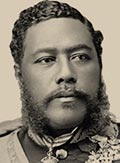
David Kalākaua (1836-1891) – The last king and next-to-last monarch of the Kingdom of Hawaiʻi. In 1881, he embarked on a 281-day trip around the world, making him the first monarch to circumnavigate the globe. During the trip, he met Thomas Edison for a demonstration of electric lights. Later, he completed the rebuilding of Iolani Palace, which became a showcase for (at the time) advanced technology. It is the only royal palace on American soil, and today it is a top tourist attraction in Honolulu.
He was known to entertain visitors with his singing and ukulele playing, and in 1997 he was inducted into the Ukulele Hall of Fame.
Fictional portrayals: None that we’re aware of.
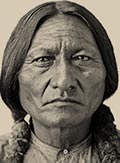
Sitting Bull (1831-1890) – A Hunkpapa Lakota leader who led Native American resistance against U.S. government policies. In 1884, he befriended Annie Oakley and symbolically adopted her as a daughter. The following year, he toured in Buffalo Bill’s Wild West, a traveling circus-like show. He was killed in 1890 during an arrest attempt by U.S. Indian agency police.
Fictional portrayals: Sitting Bull is a major character in Joe R. Lansdale’s weird west/horror/steampunk novella Zeppelins West, along with Buffalo Bill, Wild Bill Hickok, Annie Oakley, Captain Nemo, Frankenstein’s monster, and an intelligent seal named Ned. The book is out of print but available in Flaming Zeppelins, a collection that also includes the sequel Flaming London.
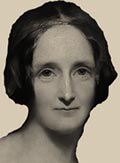
Mary Shelley (1797-1851) – Best known for writing Frankenstein, described by author Brian Aldiss “as the first seminal work to which the label SF can be logically attached.” Her character Victor Frankenstein was the prototype for mad scientists in fiction. The novel has spawned countless adaptations and re-imaginings on stage and screen as well as comic books, novels, and more.
Fictional portrayals: Shelley herself was a character in Bride of Frankenstein (1935), Gothic (1986), and Haunted Summer (1988). All three present fictionalized accounts of a summer 1816 gathering in which she joined Percy Bysshe Shelley and physician John William Polidori at the Lake Geneva home of Lord Byron. A teenage Mary Shelley teamed with Ada Lovelace in The Wollstonecraft Detective Agency, a series of children’s steampunk novels by Jordan Stratford. On TV, she appears in series 1 of The Frankenstein Chronicles.

Edgar Allan Poe (1809-1849) – Per Wikipedia: “He is widely regarded as a central figure of Romanticism in the United States and of American literature as a whole, and he was one of the country’s earliest practitioners of the short story. He is also generally considered the inventor of the detective fiction genre and is further credited with contributing to the emerging genre of science fiction.”
Fictional portrayals: In Rudy Rucker’s The Hollow Earth, Poe accompanies a young farmer on an expedition to a strange underground world. In Seth Grahame-Smith’s Abraham Lincoln, Vampire Hunter, Lincoln mistakes Poe for a vampire before befriending the writer. In Altered Carbon on Netflix, an artificial intelligence in the far future manifests as Poe running a hotel called The Raven.

William Morris (1834-1896) – One of the leading figures in the British Arts and Crafts movement of the 19th century, which sought to raise aesthetic standards in decorative arts. Some academics have drawn parallels between steampunk and the principles of the Arts and Crafts movement, which “rejected industrialized manufacturing and emphasized a return to small-scale production of handcrafted objects,” in the words of Martin Danahay of Brock University in St. Catharines, Ontario. Morris is remembered mostly as a textile designer, but he was also a poet and author whose works include two influential fantasy novels, The Wood Beyond the World and The Well at the World’s End.
Fictional portrayals: None that we’re aware of.
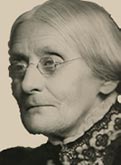
Susan B. Anthony (1820-1906) – A major figure in the women’s suffrage movement in the United States. She was also an anti-slavery activist and part of the Underground Railroad. Her birthday, Feb. 15, is recognized as a state holiday in California, Florida, New York, and Wisconsin.
Fictional portrayals: She is the main subject of William Fleeman’s The Plot to Kill Susan B. Anthony, a historical mystery set in 1891. Chasing Freedom, a historical novel by Nikki Grimes, imagines a 1904 meeting in which Anthony and Harriet Tubman reminiscence about their accomplishments. In a 2011 blog post on Tor.com, author Cat Rambo lamented the under-representation of Anthony and other figures from the suffrage movement in steampunk fiction.
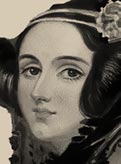
Ada Lovelace (1815-1852) – An English mathematician regarded as one of the first computer programmers. In 1833, she met Charles Babbage, who conceived a mechanical calculator known as the Difference Engine. That led to the Analytical Engine, a more complex device regarded as the first computer. It was never completed, but Lovelace wrote an algorithm for the machine that was published in 1843. The second Tuesday of October is now recognized worldwide as Ada Lovelace Day, a celebration of women in science, technology, engineering, and math.
Fictional portrayals: She’s made frequent appearances in fiction, including The Difference Engine by William Gibson and Bruce Sterling; The Wollstonecraft Detective Agency series by Jordan Stratford; and The Thrilling Adventures of Lovelace and Babbage, a graphic novel by Sydney Padua. On TV, she was a character in season two of The Frankenstein Chronicles and series 12 of Doctor Who.

Nikola Tesla (1856-1943) – Genius inventor known for his work with electricity. His memory lingered in obscurity for much of the 20th century, but he’s since become a major figure in popular culture as well as a steampunk icon.
Fictional portrayals: Wikipedia has a lengthy entry about Nikola Tesla in popular culture. He was notably portrayed by David Bowie in The Prestige, a 2006 film by Christopher Nolan. Tesla also had major roles in the pilot episode of Murdoch Mysteries and a 2020 episode of Doctor Who. In The Five Fists of Science, a graphic novel by Matt Fraction and Steven Sanders, he teamed with Mark Twain against villains Thomas Edison, J.P. Morgan, Andrew Carnegie, and Guglielmo Marconi. And we can’t overlook his bout with Edison in Epic Rap Battles of History.
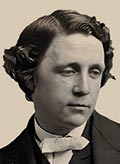
Lewis Carroll (1832-1898) – Pen name of Charles Lutwidge Dodgson, author of Alice’s Adventures in Wonderland and Through the Looking-Glass. Many of his characters have become cultural icons, and his works have been adapted and re-imagined in books, comics, movies, and other media. They’ve also provided inspiration for steampunk fiction, costumes, events, and more.
Fictional portrayals: Dodgson is a character in “Mimsy Were the Borogoves,” a science fiction story by Lewis Padgett originally published in 1943. The title is derived from “Jabberwocky,” a poem that appears in Through the Looking-Glass. The Science Fiction Writers of America recognized it as one of the best science fiction stories written before 1965. “Lewis Padgett” was the pseudonym of Henry Kuttner and C.L. Moore.
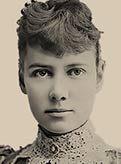
Nellie Bly (1864-1922) – Pen name of Elizabeth Jane Cochran, a pioneering journalist. She initially gained fame in 1887 as a newspaper reporter who exposed abuses at the Women’s Lunatic Asylum in New York City. To research the story, she feigned insanity to have herself admitted, and spent 10 days there. She was later inspired by Jules Verne’s Around the World in 80 Days to circumnavigate the globe, a journey that she completed in 72 days. She met Verne while traveling through France.
Fictional portrayals: Her experiences have inspired several films, including The Adventures of Nellie Bly (1981) and 10 Days in a Madhouse (2015). She’s also the protagonist in a series of historical mystery novels by Carol McCleary, beginning with The Alchemy of Murder, which puts her on the trail of Jack the Ripper at the 1889 Paris World’s Fair.

H.G. Wells (1866-1946) – Along with Jules Verne, he’s regarded as one of the most influential authors in the early history of science fiction. His 1895 novel The Time Machine popularized the concept of time travel, and the time machine in the 1960 movie adaptation has been an inspiration for steampunk design. The War of the Worlds was one of the first tales to describe an extra-terrestrial invasion.
Fictional portrayals: In the film Time After Time (1979) Malcolm McDowell portrays a young Wells, who travels to the present in pursuit of Jack the Ripper. On TV, he’s appeared in Murdoch Mysteries, Doctor Who, and Lois & Clark: The New Adventures of Superman. A female version, portrayed by Jaime Murray, appears in Warehouse 13.
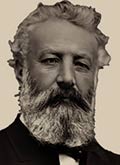
Jules Verne (1828-1905) – Another highly influential figure in science fiction and steampunk, for his written works as well as film adaptations such as Disney’s 1954 production of 20,000 Leagues Under the Sea. Author Ray Bradbury stated: “We are all, in one way or another, the children of Jules Verne.”
Fictional portrayals: The Secret Adventures of Jules Verne was a TV series that featured Verne as well as characters from Around the World in 80 Days. It ran for one season in 2000 on The Sci-Fi Channel in the U.S. and CBC Television in Canada. In The Timekeeper (1992), a time-traveling robot brings Verne to the present day. The film, which also featured Jeremy Irons as H.G. Wells, was shown as part of attractions at Disney theme parks in Tokyo, Paris, and Orlando.
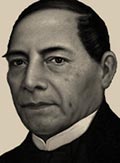
Benito Juárez (1806-1872) – The 26th president of Mexico and the first of indigenous origin. He is the only individual Mexican whose birthday is a national public holiday. Per Wikipedia: “Today Benito Juárez is remembered as being a progressive reformer dedicated to democracy, equal rights for his nation’s indigenous peoples, reduction in the power of organized religion, especially the Catholic Church, and a defense of national sovereignty. He is also remembered for his brutality and his executions of political opponents.”
Fictional portrayals: He appeared as a character in two episodes of The Wild Wild West TV series: “The Night of the Eccentrics” (1966) and “The Night of the Assassin” (1967). He’s also a character in the Stars and Stripes trilogy, a series of alternate history novels by Harry Harrison.
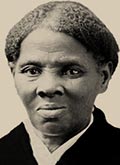
Harriet Tubman (1822-1913) – An abolitionist who escaped slavery at age 27 and later went on numerous rescue missions to bring enslaved people north via the Underground Railroad. During the American Civil War, she served as a nurse, spy, and scout for the Union Army. She also worked as an advocate for women’s suffrage.
Fictional portrayals: Tubman is the protagonist of The Chronicles of Harriet Tubman, a series of “steamfunk” adventure novels by Balogun Ojetade set in the aftermath of the Civil War. She also appears in Fire on the Mountain by Terry Bisson, The Good Lord Bird by James McBride, and The Water Dancer by Ta-Nehisi Coates. Actress Cynthia Erivo received Oscar and Golden Globe nominations for her portrayal of Tubman in Harriet, a 2019 biopic.
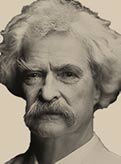
Mark Twain (1835-1910) – Pen name of Samuel Clemens, one of the most influential figures in American literature. He’s best known for The Adventures of Tom Sawyer and Adventures of Huckleberry Finn, but his works also include A Connecticut Yankee in King Arthur’s Court, an early time travel tale. He was fascinated by science and technology and counted Nikola Tesla among his close friends. His boyhood home of Hannibal, Missouri is the site of the Big River Steampunk Festival, one of the largest steampunk gatherings in the U.S.
Fictional portrayals: Twain has frequently appeared as a character in books, comics, film, and TV. As noted above, he teamed with Nikola Tesla in The Five Fists of Science, a graphic novel by Matt Fraction and Steven Sanders. Michael Schulkins put the author on “America’s wildest frontier” in Mark Twain on the Moon, a three-part book series. Other fictional appearances include Harry Turtledove’s alternate history novel How Few Remain and Joe R. Lansdale’s Flaming Zeppelins. Star Trek fans may recall Twain’s appearance in “Time’s Arrow Pt. 1 & 2,” a two-part episode of Star Trek: The Next Generation in which the crew of The Enterprise travels to 1893 San Francisco. William Shatner portrayed the author in a season nine episode of Murdoch Mysteries.
Keep up with news in the world of steampunk. Sign up for our free weekly newsletter, Steampunk Digest, delivered to your inbox every Thursday. You’ll get it a day before it's posted on the website.
Support The Steampunk Explorer!
Patreon: Make a monthly pledge of $1 or more. Includes premium content.
Tip Jar: You can tip the editor in any amount via PayPal.me.
CafePress: Buy T-shirts, buttons, or tote bags with our logo.











Nenhum comentário:
Postar um comentário